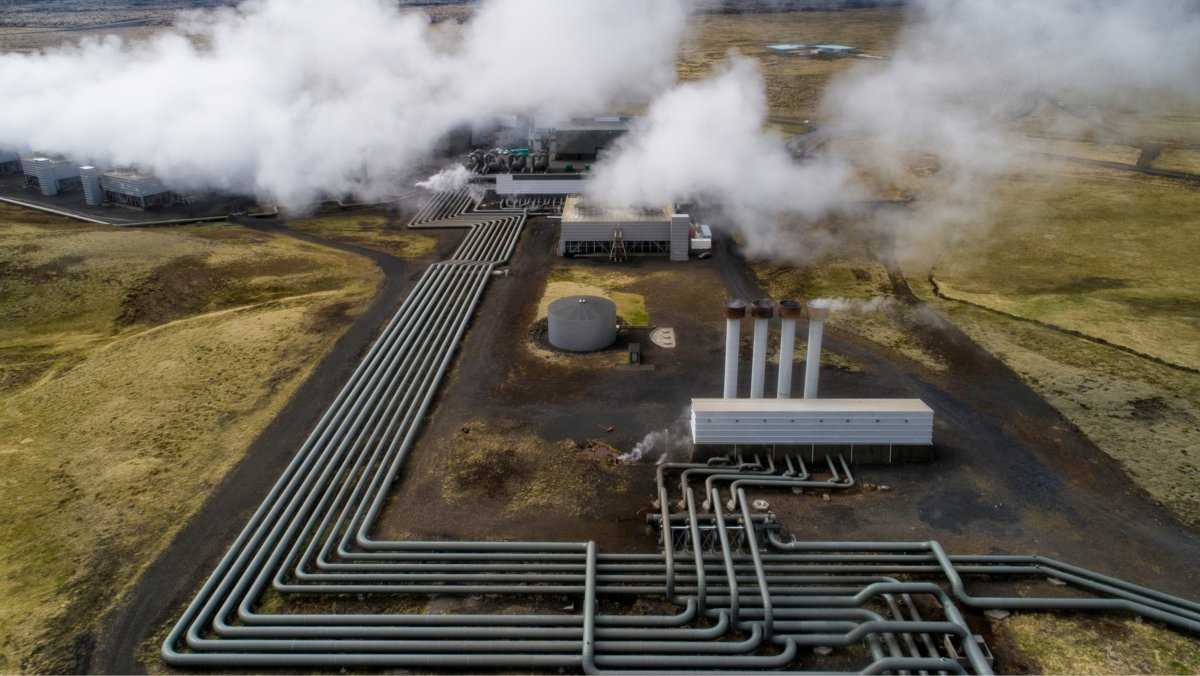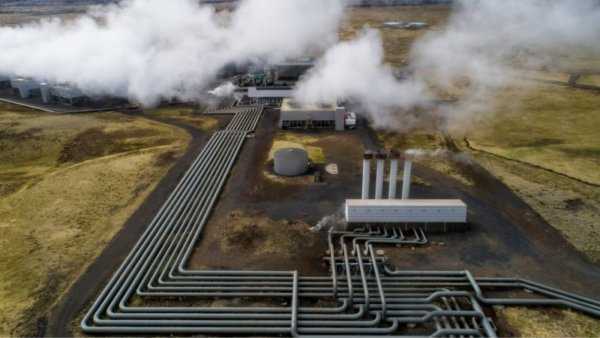Carbon Footprint
Square Footprint


36.7 kg CO2e / MWh
0.55 ft2 Land Use Change / MWh
Carbon Footprint
Square Footprint


36.7 kg CO2e / MWh
0.55 ft2 Land Use Change / MWh




If the average US home's annual electricity (10.715 MWh) was powered by geothermal, it would use:
46.3
Gallons of Gasoline Equivalent
393.2
kg CO2e

If the average US home's annual electricity (10.715 MWh) was powered by geothermal, it would use:
46.3
Gallons of Gasoline Equivalent
393.2
kg CO2e
The Carbon Footprint of geothermal power is 36.7 kg CO2e per Megawatt Hour (MWh). The greenhouse gas emissions of geothermal power are 13.2 times lower than natural gas power.


If the average US home's annual electricity (10.715 MWh) was powered by geothermal for 10 years, it would result in a land use change equivalent to:
0.4
Parking Spaces Equivalent
59
ft2

If the average US home's annual electricity (10.715 MWh) was powered by geothermal for 10 years, it would result in a land use change equivalent to:
0.4
Parking Spaces Equivalent
59
ft2
Over the 100 year lifespan of a geothermal power plant, the land use change resulting from geothermal power is 0.55 ft2 per Megawatt Hour. The land use change resulting from geothermal power is 15.4 times lower than natural gas power.
Data and Assumptions
Carbon Footprint:
- Lifecycle Carbon Footprint of Geothermal Power is based on NREL (2022A). Median value of 36.7 g CO2e / kWh is based on a harmonized value from 15 studies with 35 unique values.
- Lifecycle Carbon Footprint of Natural Gas based on NREL (2022A). Median value of 486 g CO2e / kWh is based on a harmonized value from 58 studies with 93 unique values.
Land Use:
- Square Footprint of Geothermal Power is based on Trainor et al. (2016). Value of 5.14 km2 / TWh (5.14 m2 / MWh) is reported in the study. Land use is 55.3 ft2 / MWh over the 100 year expected lifespan (NREL, 2022B) of a geothermal power plant. The induced land use change resulting from 1 MWh is divided by the 100 year expected lifespan, which results in a land use change of 0.55 ft2 / MWh (0.051 m2 / MWh).
- Square Footprint of Natural Gas based on Trainor et al. (2016). The combined land use factor for all natural gas production methods is 0.79 km2 / TWh (0.79 m2 / MWh), which equals 8.5 ft2 / MWh. As natural gas is an extractive resource, land use change occurs every year, and thus power plant lifespan does not affect land use change. Land use change varies by the method of natural gas extraction. See the Natural Gas Power Carbon Footprint & Environmental Impact page for the assumptions made.
- Square Footprint of a Parking Space is 144 ft2, based on the average dimensions stated by Franklin Street (2019).
- Average 2020 US Household annual electricity of 10,715 kWh is based on EIA (2021A).
- Carbon Footprint of gasoline is 8.50 kg CO2e / gallon, based on EIA (2021B).
References
EIA: US Energy Information Administration. (2021A). How Much Electricity Does an American Home Use?. See Link to Source
EIA: US Energy Information Administration. (November 18, 2021B). Carbon Dioxide Emissions Coefficients by Fuel. See Link to Source
Franklin Street. (May 23, 2019). How Large is a Parking Space? See Link to Source
NREL: National Renewable Energy Laboratory. (2022A). Life Cycle Assessment Harmonization. See Link to Source
NREL: NREL: National Renewable Energy Laboratory. (2022B). Useful Life. See Link to Source

